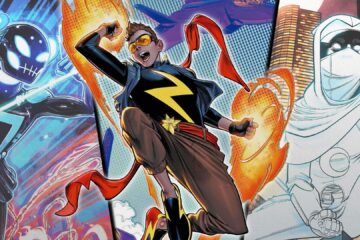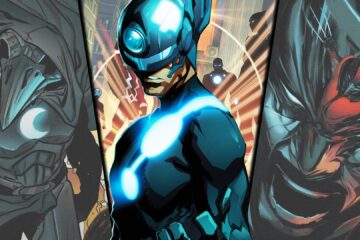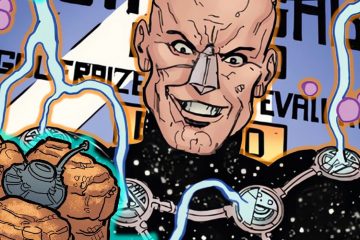The Invincible comic series by Robert Kirkman is incredibly beloved, and for good reason. The series achieves something that so few superhero comics get to accomplish. It tells a complex, engaging, and ultimately moving story that has a proper ending. Kirkman was able to finish the story he wanted to tell, which is a luxury when so many comics get canceled on short notice. This, combined with a great premise, Kirkman’s writing, and amazing art from Cory Walker and Ryan Ottley, make for an awesome superhero story. The recent animated adaptation has just made it more popular.Invincible as a whole is a send-up of the superhero comic genre. It loves to play with the tropes and character archetypes that fans are already familiar with. This usually leads to the tropes being turned on their head in some way. For example, Mark Grayson (Invincible) seems like a pretty typical teen superhero. Throughout Invincible’s many issues, however, he is forced to confront his own notions of right and wrong and be willing to exist in a moral gray area. In many ways, the comic series is a deconstruction of the superhero genre. However, it does still play some tropes straight. These tropes often become more effective or enjoyable because they adhere to tradition.Invincible travels to a future timeline where the Immortal has gone mad due to his long life and is desperate to find someone who will permanently kill him. “Immortality” is also explored through the Viltrumites, who age so slowly and heal so quickly as to be functionally undying. This is stated to have damaged their view of personal relationships and made it hard for them to value personal connection.
The Invincible comic series by Robert Kirkman is incredibly beloved, and for good reason. The series achieves something that so few superhero comics get to accomplish. It tells a complex, engaging, and ultimately moving story that has a proper ending. Kirkman was able to finish the story he wanted to tell, which is a luxury when so many comics get canceled on short notice. This, combined with a great premise, Kirkman’s writing, and amazing art from Cory Walker and Ryan Ottley, make for an awesome superhero story. The recent animated adaptation has just made it more popular.
Invincible as a whole is a send-up of the superhero comic genre. It loves to play with the tropes and character archetypes that fans are already familiar with. This usually leads to the tropes being turned on their head in some way. For example, Mark Grayson (Invincible) seems like a pretty typical teen superhero. Throughout Invincible‘s many issues, however, he is forced to confront his own notions of right and wrong and be willing to exist in a moral gray area. In many ways, the comic series is a deconstruction of the superhero genre. However, it does still play some tropes straight. These tropes often become more effective or enjoyable because they adhere to tradition.
Invincible travels to a future timeline where the Immortal has gone mad due to his long life and is desperate to find someone who will permanently kill him. “Immortality” is also explored through the Viltrumites, who age so slowly and heal so quickly as to be functionally undying. This is stated to have damaged their view of personal relationships and made it hard for them to value personal connection.
#Comic #Tropes #Invincible #Plays #Straight
Note:- (Not all news on the site expresses the point of view of the site, but we transmit this news automatically and translate it through programmatic technology on the site and not from a human editor. The content is auto-generated from a syndicated feed.))



